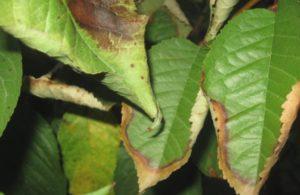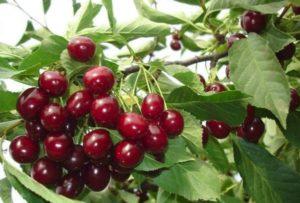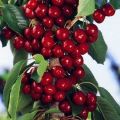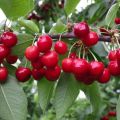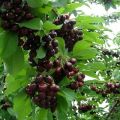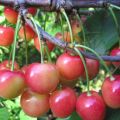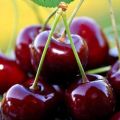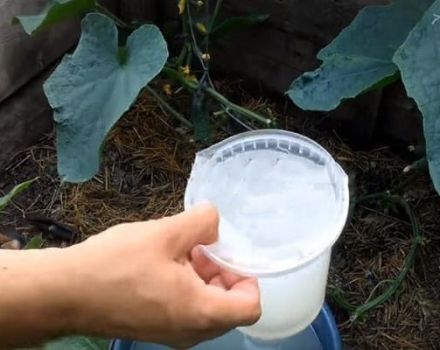Characteristics and description of Vasilisa cherry varieties, planting and care
Sweet cherry is one of the favorite and popular fruit crops. When the trees are covered with fragrant white flowers, it symbolizes the arrival of a real, warm spring. She will generously endow her owners with delicious fruits, the main thing is not to make a mistake when choosing a variety. In terms of the totality of qualities, the Vasilisa cherry has won popularity among summer residents and gardeners.
History of origin and region of growth
Cherry Vasilisa was bred in the early 2000s by Ukrainian breeders, headed by the honored agronomist - L. I. Taranenko. It is obtained from the cross-crossing of the Donetsk beauty and Donetsk coal varieties. The work was carried out at the Artemovskaya Experimental Breeding Station. Sweet cherry was created as a home culture, but over time it began to be used in industrial plantings.
The variety is zoned in the eastern regions of Ukraine, where in winter the temperature drops to -25 C, -30 C degrees, and in summer it rises to +40 C degrees. In a harsher climate, cherries will have problems with wintering, and flowering trees can also fall under severe frosts or spring hail..
Pros and cons: is it worth planting on the site
Cherry Vasilisa compares favorably with most of these varieties by a set of positive characteristics. But, of course, the variety also has disadvantages:
Positive sides:
- high content of vitamins and microelements in sweet cherry fruits;
- large, aligned and beautiful fruits;
- berries of the variety are dense, elastic. They have high rates of keeping quality and transportability;
- versatility of the use of fruits, including suitability for commercial implementation;
- the ability to withstand drought, relatively high frost resistance;
- the variety has high yield rates;
- adaptation of cherries to different growing conditions and unfavorable factors.
Weaknesses:
- if it rains regularly during fruiting, then a large percentage of cherry fruits will crack. Berries are suitable only for processing, preferably at the place of collection;
- in some cases, the berries do not collect enough sugar, the preservation products are tastier than fresh fruits.
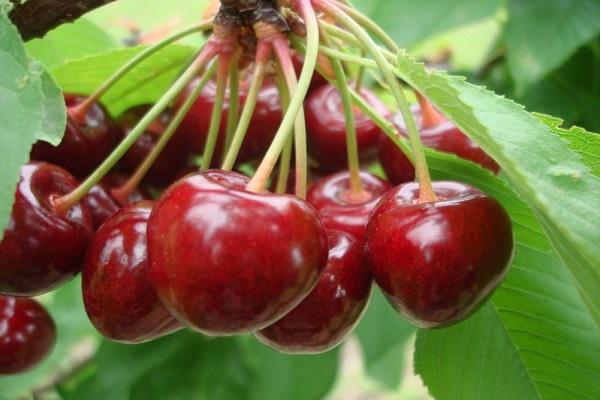
Description of culture
When choosing cherries, in particular the Vasilisa variety, you need to take into account its "adult" size, and also know what pollinator varieties will be needed.
Adult tree height and crown size
The variety is highly vigorous, reaching a height of 4-5 meters in adulthood. It is advisable to carry out timely control of the growth of sweet cherry. The tree branches well, forms a dense, spherical crown. Branches are powerful, thick, slightly arched, brownish in color. The shoots are well leafy, the leaves are oval, ovoid, dark green in color, with a rich glossy shine.
Pollinators, flowering and fruiting
The variety blooms in mid-April-early May. Pollinating plants are required for fruit set. These are other varieties of sweet cherry, the flowering time of which coincides with Vasilisa. It is desirable to have 2-3 trees on the site. The following varieties can be pollinators:
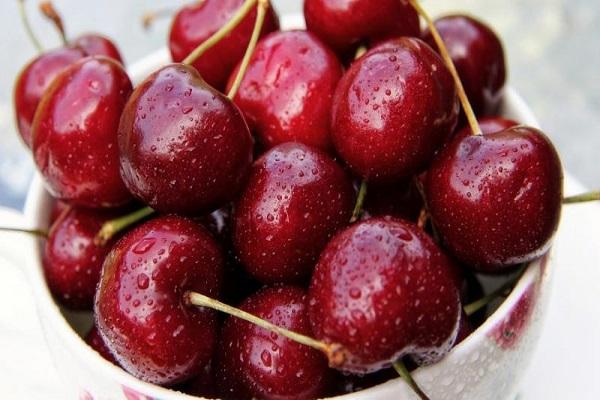
- Annushka;
- Valery Chkalov;
- Drogana yellow;
- Starking;
- Burlat;
- Melitopol early.
Vasilisa begins to bear fruit at the age of 3, and enters into full force at 4-5 years. The variety is mid-season, the fruits begin to ripen in the first half of June. With cold springs and cool summer weather, fruiting times are shifted towards July.
The variety is characterized by high and stable yields. Depending on the age of the plant, the region of cultivation, soil and agricultural technology used, the yield ranges from 25 to 50 kilograms. The variety does not lose its productivity for 15-20 years.
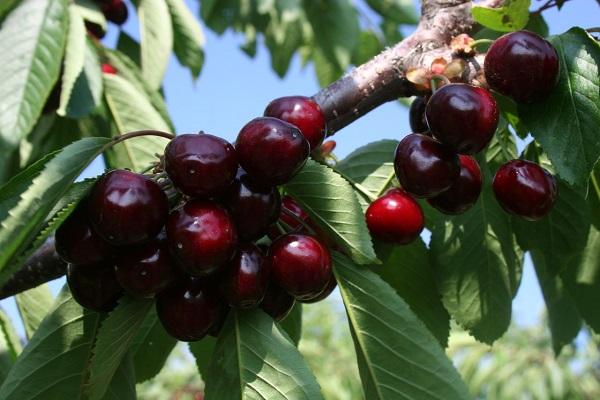
Vasilisa differs primarily in the size of the berries. Not only in domestic, but also in the world assortment of cherry varieties, it is one of the largest-fruited. The berries are large and very large, firm, fleshy, weighing 11-14 grams. Fruits are of excellent presentation, leveled, beautiful, rounded. The skin is thin, but firm and elastic. The berries are intensely red, scarlet, darken slightly when overripe.
The pulp is firm, but juicy, with a thick cherry aroma, slightly crispy when used. The seeds are small, easily separated from the pulp. Fruits of dessert taste, sweet, but without sugary flavor, with light wine notes. Tasting expert assessment - 4.0-4.5 points out of 5.0 possible.
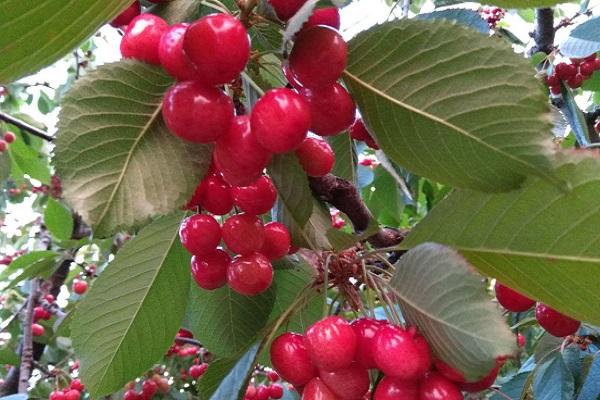
Application and transportability of fruits
Due to its strong, elastic skin and dense pulp, Vasilisa cherries have high keeping rates and transportability. Suitable for long distance transportation. Cooling and transporting in small boxes significantly increases this figure.
Vasilisa berries for universal use. Sweet cherries are eaten fresh with pleasure, various compotes, syrups, jams are made from it, rolled up and even frozen for the winter. And, of course, the berries are suitable for commercial sale in fresh markets.
Variety resistance characteristics
To save effort, money and time, the gardener must take into account the resistance of the selected variety to negative weather factors, as well as diseases and pests of sweet cherries.
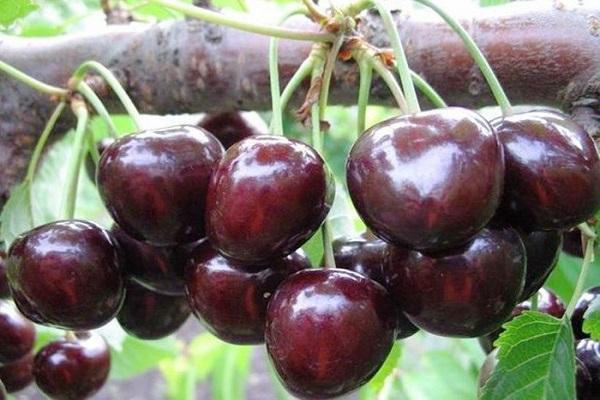
Resistance to negative temperatures and drought
The variety has relatively good frost resistance. Moreover, both the shoots themselves and the buds are resistant to low (up to -30 C degrees) temperatures. The variety is not intended for cultivation in the northern regions. Vasilisa has good heat and drought resistance, but regular watering is simply necessary to obtain rich yields.
Susceptibility to disease and parasites
The Vasilisa variety is not a painful one, but without preventive spraying, it is possible to get it with moniliosis, coccomycosis and fruit rot. Cherry is also affected by such a pest as a cherry fly, the roots are gnawed by the larvae of the May beetle - beetle.Many birds like to eat its fruits, especially rooks.
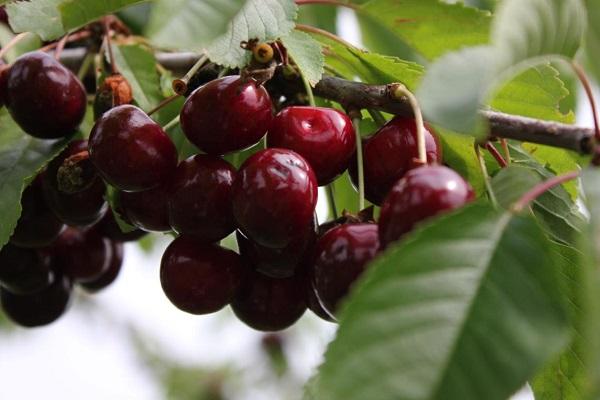
Sweet cherry planting algorithm
For a high percentage of seedling survival, vigorous growth, high yield rates and fruit quality, it is necessary to choose a place in advance and prepare a planting pit. And, of course, choose a strong, healthy seedling with a strong root system.
Recommended timing and landing pattern
The distance to the nearest trees when planting should be at least 4 meters. You can plant a plant with an open root both in spring and autumn. The timing varies depending on the region, it is important to consider how early the hot weather comes or, conversely, the cold comes. Usually planted in autumn in September / October, and in spring in March-April, before bud break.
Selection and preparation of a seedling
Not only the survival rate of the plant, but also the future yield depends on the correct choice of planting material. For planting, choose well-developed, 1-2-year-old seedlings. It is important to carefully examine the tree and find the trace of the vaccination. It will be a guarantee of the seedling grade.
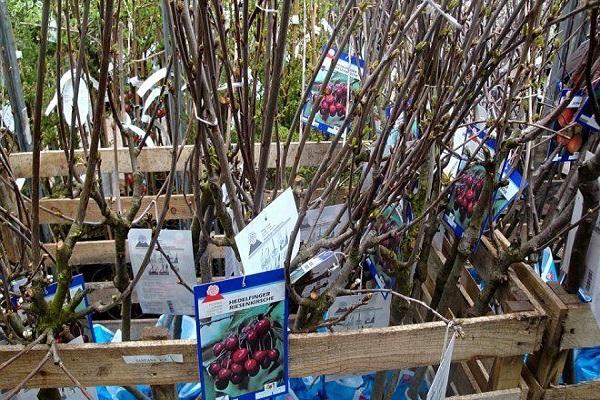
It is advisable to purchase planting material from reputable, trusted sellers. It is especially good if it is grown near the place of future planting. The roots should not be rotten, frail, damaged, with any growths. The preferred trunk diameter when choosing a seedling is from 2 centimeters. The tree should have a straight, smooth trunk and at least 3-4 well-branched branches.
Preparing the site and the landing pit
Planting should be carried out in a well-sunlit place, previously cleared of weeds. Sweet cherry prefers moist, loamy soils. First of all, a planting hole is dug, preferably 2-3 times larger than the root tree. Usually its size is 80x60 centimeters. If the groundwater in spring comes close to the soil surface, then a drainage layer is poured onto the bottom of the pit.
Work technology
Before planting, a peg-support is driven into the bottom of the hole, to which the trunk of a young tree is tied. A planting substrate is poured into a mound at the bottom, a tree is placed on it, bent roots are straightened. The pit is filled with nutritious soil, lightly compacted and spilled abundantly with water. If the soil has subsided, then it is poured again and spilled with water. An excellent option would be post-planting mulching of the root zone.
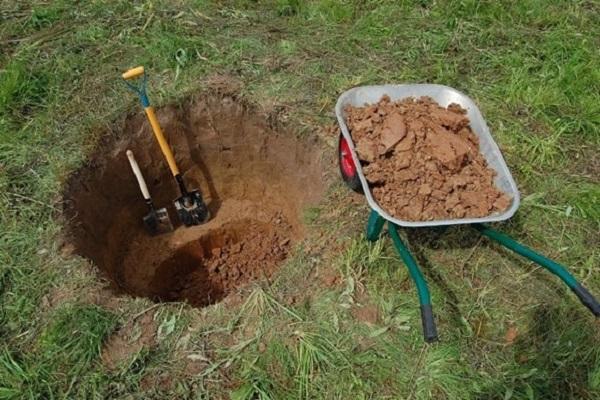
Caring for the culture of Vasilisa
In order for the Vasilisa cherry to please the gardener for many years with large, tasty berries, it is necessary to follow the correct agricultural technology.
Irrigation
Cherry varieties Vasilisa are sensitive to insufficient watering. Regular, abundant irrigation is important during periods of active growth, when fruit sets, in hot, dry summer months and in the pre-winter period, before the onset of severe cold weather. Irrigation is carried out as the soil dries up. When watering, moisture should saturate the soil by 30-40 centimeters. It is advisable not to pour water under the root, but to evenly moisturize the root zone.
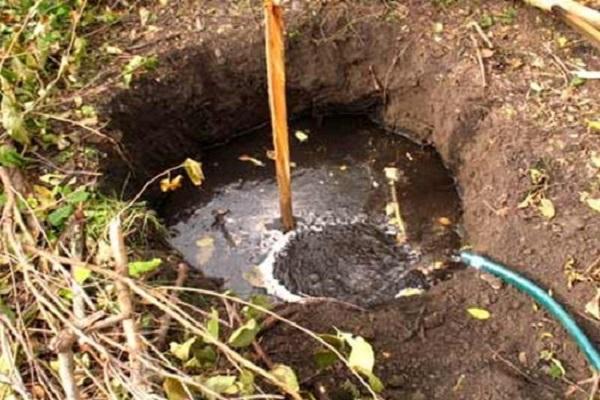
How and what to feed cherries
When feeding cherries, phosphorus, potash fertilizers and organic matter are applied 1 time per season - in the autumn. Potassium chloride with a rate of 12 grams per square meter and superphosphate, with a rate of 30 grams per square meter, are suitable. Nitrogen fertilizers, in particular ammonium nitrate, are applied in 2 doses - half in autumn, and the second half in early spring.
Loosening and care of the trunk circle
For air access to the roots of cherries, as well as better moisture impregnation, regular loosening of the soil is carried out, as well as weeding or plucking of weeds. Frequency of shallow loosening - at least 3-4 times per season. Depending on the type of soil, the amount of loosening is increased. An excellent agricultural technique would be mulching the trunk circle with non-woven material (agrofibre), and especially organic matter.
Shaping and pruning
The cultivar has strong vigor and branches well. Therefore, the gardener, if desired, must limit the growth of the tree by cutting off the top at the desired height. When growing cherries, it is important to form a crown and carry out regular pruning of branches, which are shortened to half the length. This procedure is carried out in the spring, before bud break. But small, diseased, dried and thickening branches are removed regularly.
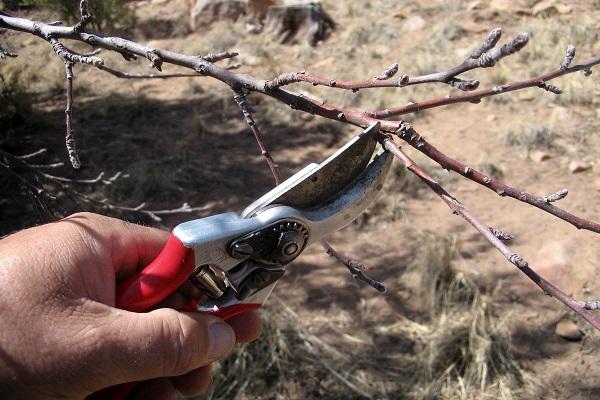
Preventive treatments
To prevent diseases and pests, regular preventive treatments are carried out. Fungicides will help protect cherries from diseases - Copper sulfate or Bordeaux mixture (copper sulfate with lime), as well as Horus, Skor, Tilt.
To combat the beetle, the root strait is used with Aktara, Nurel D. insecticides. And to combat the cherry fly, loosening of the soil near the trunk and spraying with insecticides is carried out. Bi-58, Calypso, Fufanon will do. The installation of stuffed animals, rattles, protective nets helps from birds.
Preparing for winter
In order for the tree to overwinter successfully, it is necessary to perform a number of agrotechnical techniques. They consist in abundant pre-winter watering, sanitary cleaning and pruning, loosening followed by mulching of the trunk circle, fertilizing and processing with chemicals.
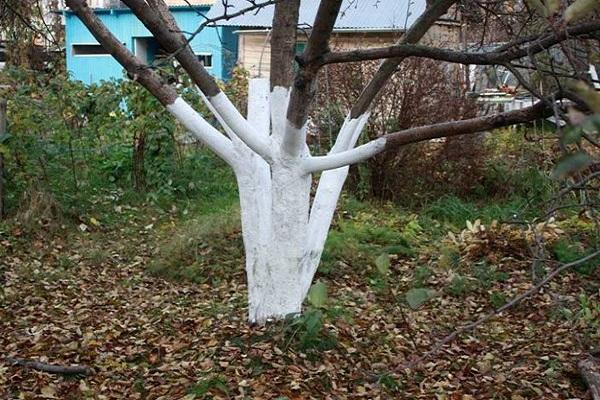
How to propagate a tree
Sweet cherries are propagated by grafting, as well as by rooting cuttings and layering. When propagated by cuttings, a high yield of seedlings, but it will take at least 5 years to wait until a fruiting tree grows from a small cuttings. Cherry seedlings from cuttings develop somewhat faster.
The most effective way to get good seedlings quickly is by grafting. Ripe cherry cuttings are grafted to strong, mature trees. This improves berry flavor, frost resistance, disease resistance and yield.
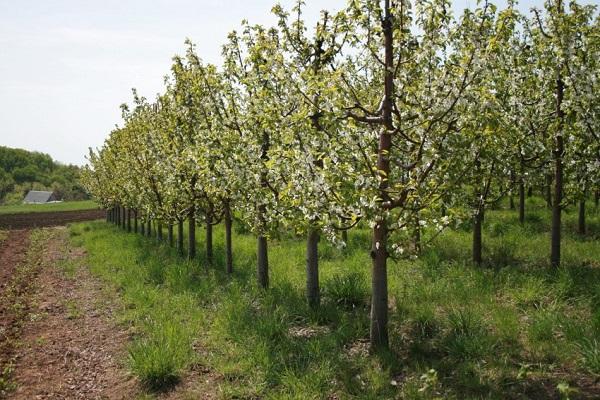
Reviews of gardeners about Vasilisa cherry
“I have been“ friends ”for a long time with Vasilisa cherry varieties. I like the fact that it does not get sick often, it does not freeze in winter, and at the time of fruiting, the branches are strewn with delicious berries. We have to put up props! "
Svetlana Zemtsova, Volgograd
“Delicious, fruitful cherry variety. And most importantly - what large berries Vasilisa has. This is a lovely sight! And they taste good, you can also eat fresh, boil or roll up compotes. "
Inna Chernova, Belgorod
